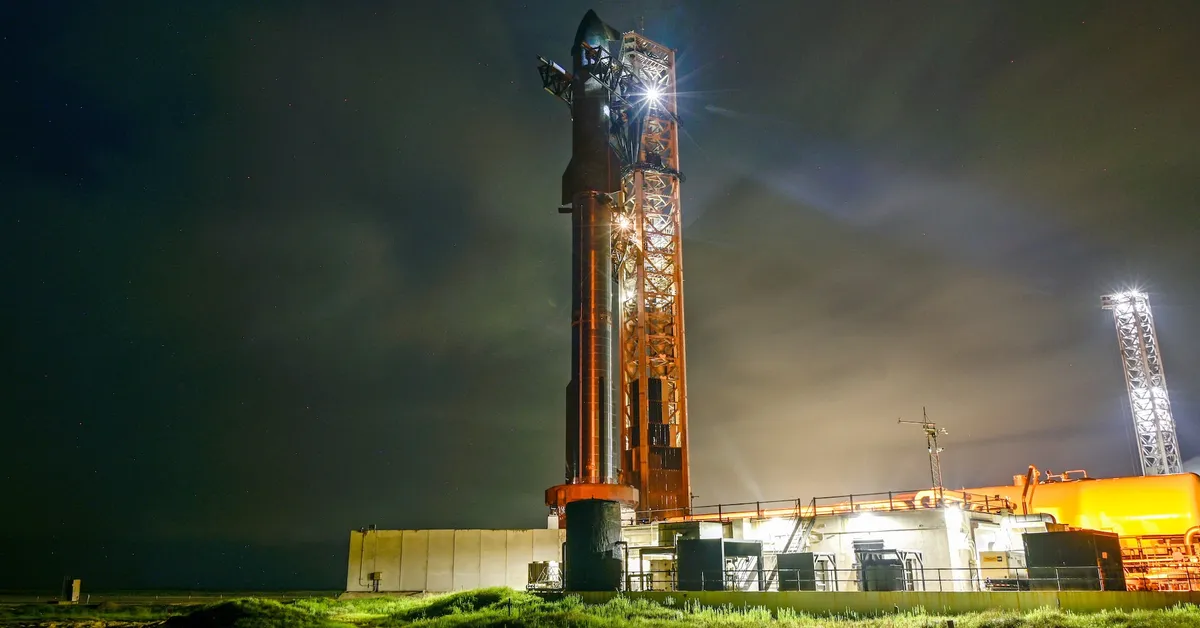
On August 24, 2023, Elon Musk's SpaceX announced the postponement of the highly anticipated tenth mission of its Starship rocket from Texas. The decision to delay the launch stemmed from an issue at the launch site, hindering the company's efforts to achieve critical development milestones that had previously been missed due to early failures in earlier tests.
The impressive Starship system, which stands at 232 feet (70.7 meters) with its Super Heavy booster and 171-foot (52-meter) upper stage stacked together, was in the final stages of preparation at SpaceX's Starbase rocket facility. The rocket was being filled with propellant in anticipation of a liftoff scheduled for 7:35 p.m. ET (2335 GMT). However, approximately 30 minutes prior to the intended launch time, SpaceX took to X (formerly Twitter) to announce that it would be standing down from the flight to allow for troubleshooting of the ground systems issue.
Elon Musk had planned to provide an update on the progress of Starship's development before the launch. However, a placeholder live stream indicated that this update had been canceled along with the launch. As of now, SpaceX has not announced a new date for the next attempt. Similar scrubs in the past have been resolved in just a few days, so optimism remains for a swift return to the launch pad.
This year has been challenging for the development of SpaceX's next-generation rocket, which is critical for the company's future launch business and Musk's ambitions for Mars colonization. NASA is particularly keen to utilize the Starship for its first crewed moon landing since the Apollo program, targeted for as early as 2027. Throughout the year, SpaceX has faced multiple testing setbacks, including two early flight failures, another failure in space during the ninth flight, and a significant explosion at a test stand in June that sent debris into nearby areas of Mexico.
Despite these challenges, SpaceX has continued its rapid production of new Starship prototypes at its expansive Starbase facilities. These setbacks highlight the technical complexities inherent in the latest iteration of the Starship, which boasts enhanced capabilities such as increased thrust, a more resilient heat shield, and stronger steering flaps. These features are essential for achieving successful atmospheric reentry—a key aspect of Starship's goal of rapid reusability, which Musk has long advocated for.
The mission was designed to launch from Texas around sunset, with the Starship upper stage expected to separate from the Super Heavy booster at a high altitude. In previous tests, the Super Heavy booster returned to its launch pad using mechanical arms, but this time it was set to target the Gulf of Mexico for a soft water landing to test a backup engine configuration. Following the separation, Starship was supposed to ignite its engines to propel itself further into space, with plans to deploy its first batch of mock Starlink satellites and reignite an engine while on a suborbital trajectory.
After completing its objectives in space, Starship would then aim for a controlled reentry over the Indian Ocean. This phase is crucial for testing various prototypical heat shield tiles and engine flaps designed to withstand extreme temperatures—a significant challenge that has previously damaged the rocket's exterior during earlier flights. SpaceX's design for Starship's reentry profile intentionally stresses the structural limits of the rear flaps during the maximum entry dynamic pressure phase, underscoring the rigorous testing required for future missions.
As SpaceX continues to troubleshoot the recent issues, the aerospace community eagerly anticipates the next steps in the Starship program, which remains a pivotal element in the future of space exploration.